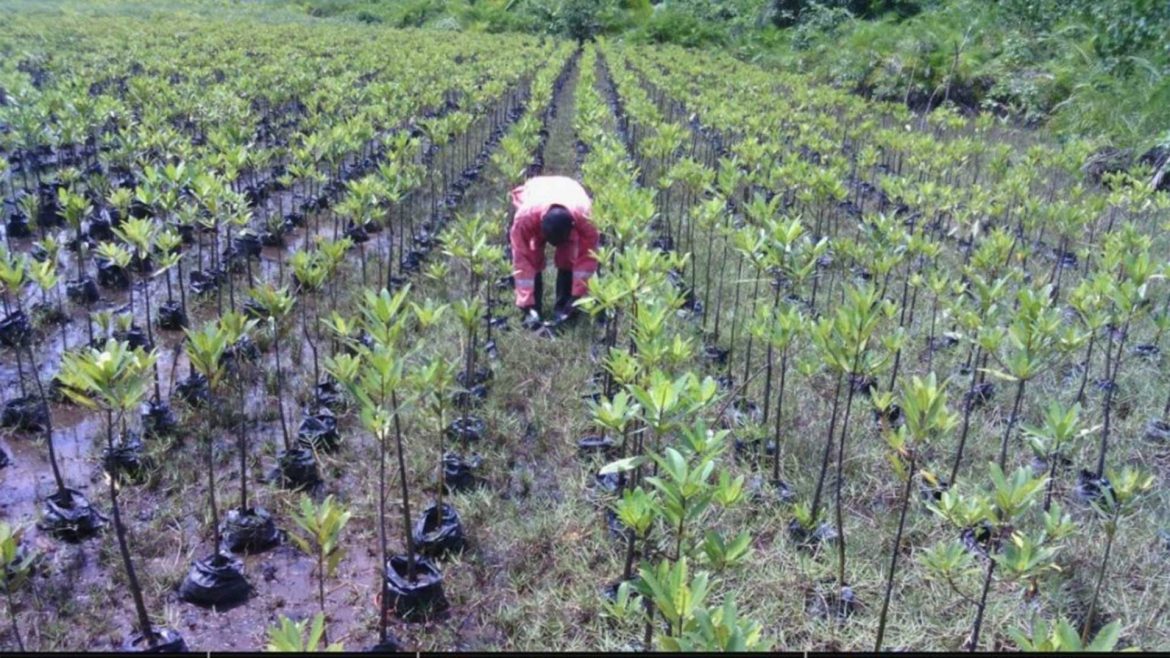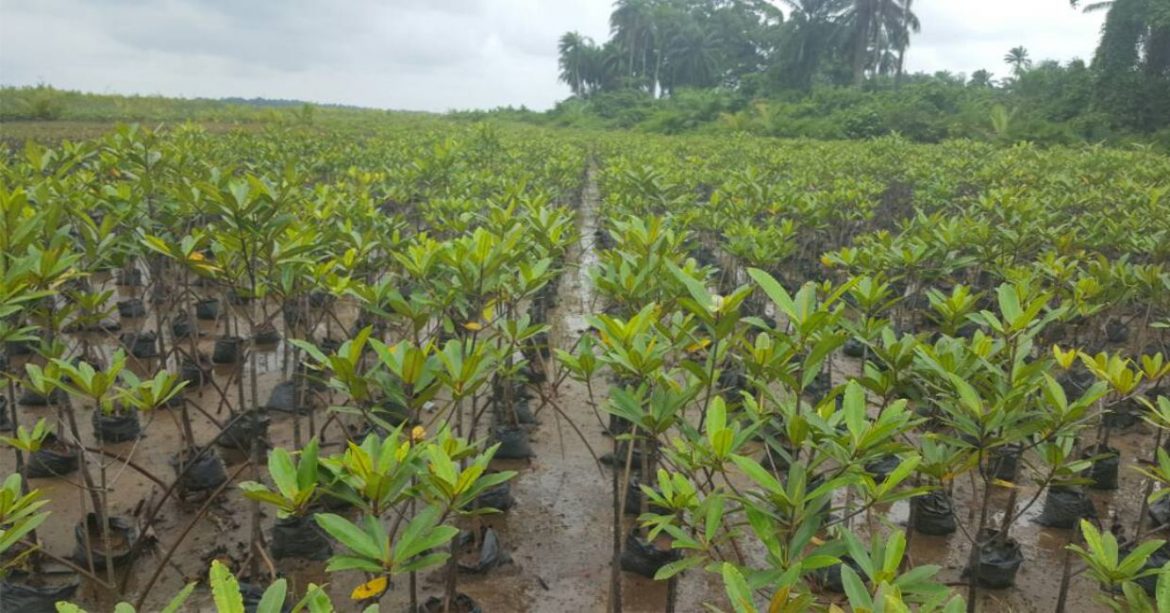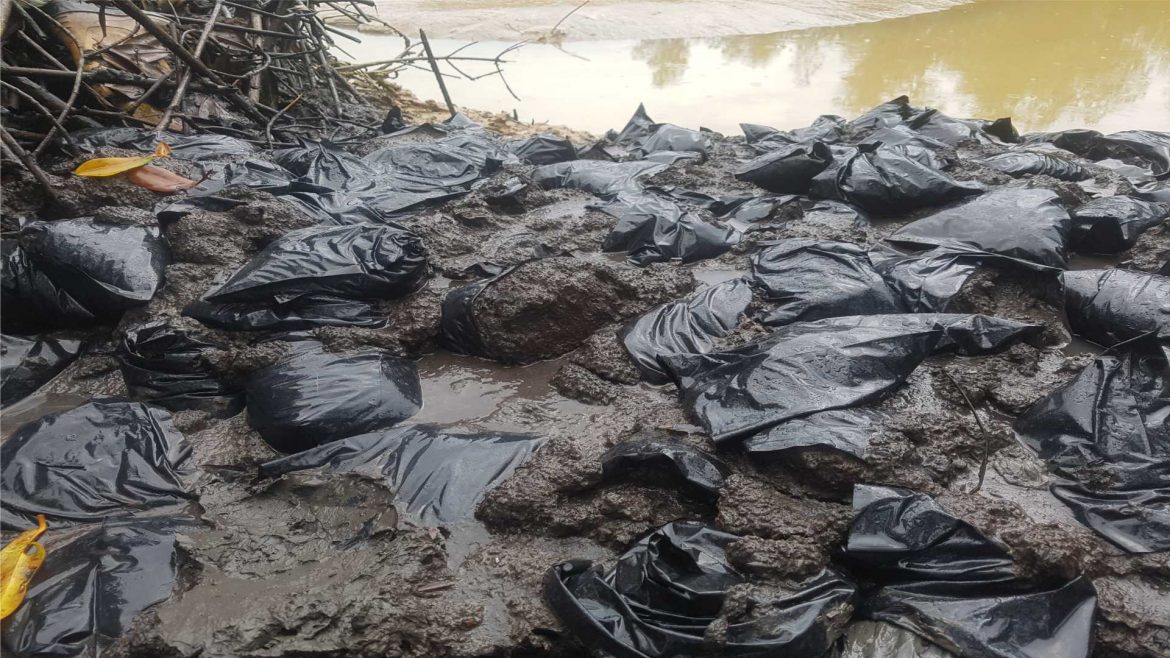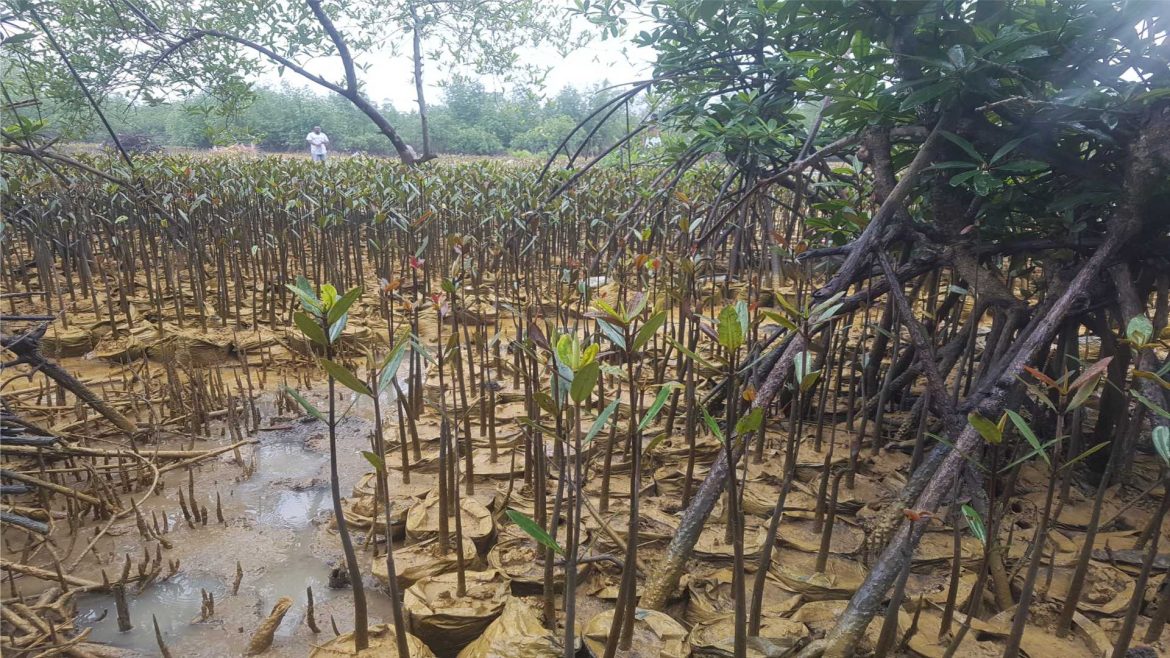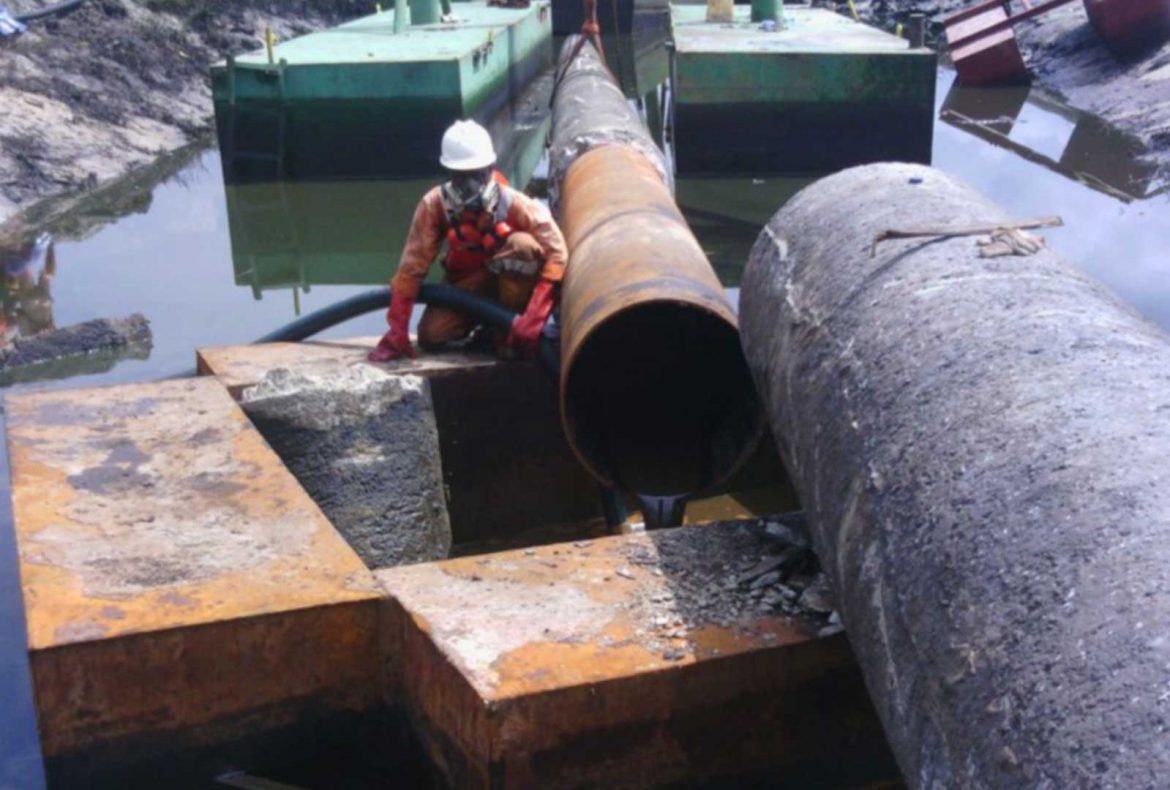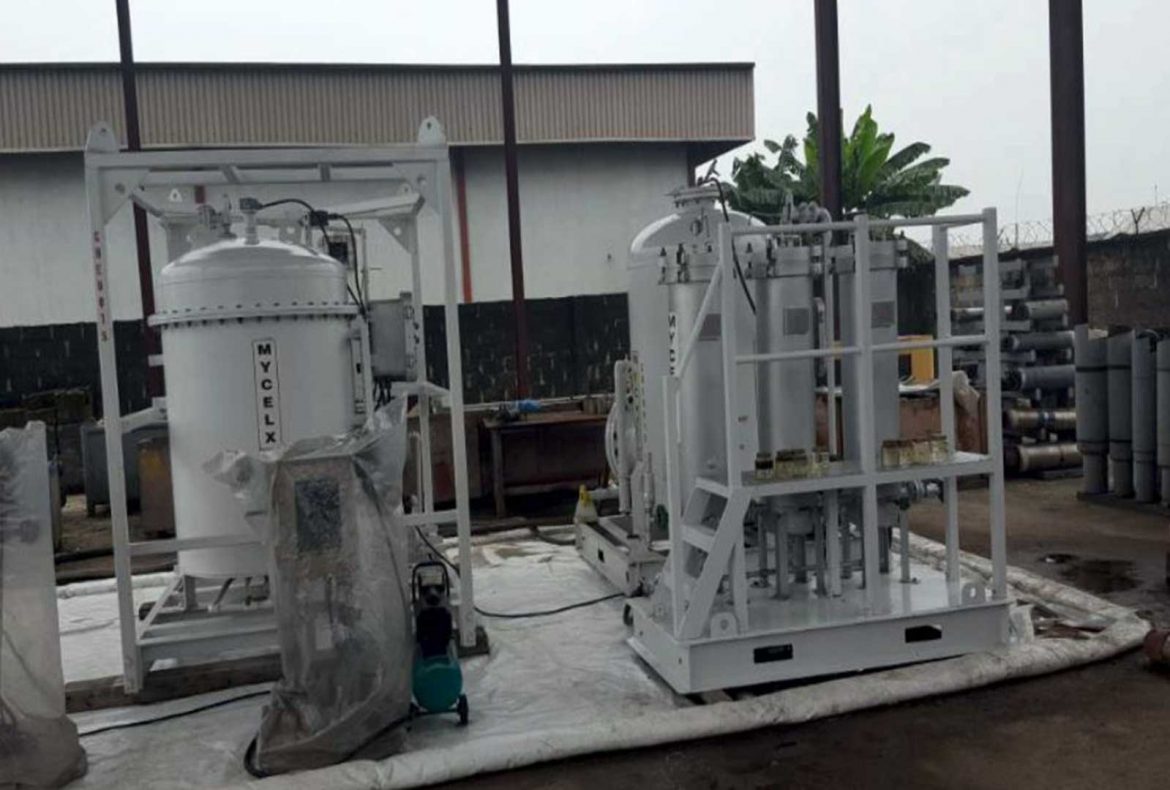Ecosystem/Mangrove Restoration:
Giolee has a strategic partnership with Lewis Environmental Services Inc to provide extensive expertise in the restoration and management of mangrove forest and other wetlands. Giolee has a Mangrove nursery with over 1,000,000 Juvenile mangrove that is being nursed, with great resistance to invasive species and other unfavorable edaphic factors and ready to be outplanted any where at clients demand. When hydrocarbon coats the roots of the mangrove, it starves them of oxygen, essential element for metabolic activities as a result of this it leads to the increase in death rate of mangrove which is a hot spot for biodiversity.
Mangrove Restoration Technique In summary, five critical steps are necessary to achieve successful mangrove restoration:
Understand the autecology (individual species ecology) of the mangrove species at the site; In particular means of propagation, species distribution and taxonomy
Understand the normal hydrologic patterns and sediments that control the distribution and successful
Establishment and growth of targeted mangrove species.
Assess modifications of the original mangrove environment that currently prevent natural from growing.
Secondary succession (recovery after damage).
Design the restoration program to restore appropriate hydrology and, if possible, utilize natural volunteer mangrove propagate recruitment for plant establishment.
Only utilize actual planting of propagates, collected seedlings, or cultivated seedlings after Determining (through steps a-d) that natural recruitment will not provide the quantity of Successfully established seedlings, rate of stabilization, or rate of growth of saplings Established as objectives for the restoration project (Lewis and Marshall 1997) Planting Mangroves is not difficult provided we observe some basic guidelines.
The pre-condition for success is to conduct an initial survey of representative habitats in areas close to the chosen site that should focus on 1. Mangrove species (number of trees of each species per hectare)
2. Type of substrate(soil type)
3. Depth of water at high and low tides
4. Salinity of water trapped in mangrove mud at low tide
5. Ground vegetation and mangrove associate plants It is evident that the best results will be achieved by replicating the exact species mix determined in those findings.
TECHNICAL APPROACH/METHODOLOGY
Giolee’s method of mangrove restoration will employ the following approach to successfully rehabilitate the depleted mangrove and these will include basically;
Understand normal hydrology of the area
Assess modifications to hydrology or added stress;
Restore or create normal hydrology.
Selection of healthy seedlings.
Plant young mangroves as needed
Site hydrology study
The understanding of the site hydrology is the bed rock of a successful mangrove restoration project. Giolee Global Resources therefore, will undertake the study of the site hydrology and understand the normal hydrologic patterns that control the distribution and successful establishment and growth of targeted mangrove species. Each mangrove species thrives at different substrate level because of their genetic traits which in some parts indicates the amount of exposure the mangrove will have to tidal waters. Determination and restoration of Modifications or Disturbances Giolee Global Recourses will take measures to address any technical or social factors that may impact negatively on the restoration project. Giolee will examine the modifications of the original mangrove environment that currently prevent natural recovery after damage.
The modifications or disturbances may include:
Blocked tidal exchange that might prevent secondary succession from occurring,
Lack of groundwater
Shoreline abrasion and lowered substrate level and lack of sediments
RESTORATION DESIGN
Giolee Global Recourses will design the restoration program for the identified modifications on the project site. The restoration design will involve a complete confirmation of the remediation project that was done, to ensure new contamination of hydrocarbon does not exist by ensuring the site is within acceptable risk level for the enhancement of mangrove growth. Seed sourcing /Stocking Giolee currently owns a mangrove nursery which was started in March, 2015 in the Niger Delta of Nigeria. We have over five hundred thousand (500,000) seedlings of this nursery which were carefully selected from various types of healthy, ripe propagules. This selection made our nursery farm to house different species of mangrove, these species include Rhizophora racemosa, Rhizophora harisonii , Rhizophora mangle available to be deployed at clients demand. Mangrove planting is the next step in the mangrove restoration after identifying and treating the disturbances.the next will be the transferring of the juvenile mangroves by boat from the nursery to the project site for actual planting.
Giolee has a strategic partnership with Lewis Environmental Services Inc to provide extensive expertise in the restoration and management of mangrove forest and other wetlands. Giolee has a Mangrove nursery with over 1,000,000 Juvenile mangrove that is being nursed and ready to be transplanted any where at clients demand. When hydrocarbon coats the roots of the mangrove, it starves them of oxygen which leads to the increase in death rate of mangrove.
Mangrove Restoration Technique In summary, five critical steps are necessary to achieve successful mangrove restoration:
Understand the autecology (individual species ecology) of the mangrove species at the site; In particular the patterns of reproduction, propagule distribution, and successful seedling Establishment.
Understand the normal hydrologic patterns that control the distribution and successful
Establishment and growth of targeted mangrove species.
Assess modifications of the original mangrove environment that currently prevent natural
Secondary succession (recovery after damage).
Design the restoration program to restore appropriate hydrology and, if possible, utilize natural volunteer mangrove propagate recruitment for plant establishment.
Only utilize actual planting of propagates, collected seedlings, or cultivated seedlings after Determining (through steps a-d) that natural recruitment will not provide the quantity of Successfully established seedlings, rate of stabilization, or rate of growth of saplings Established as objectives for the restoration project (Lewis and Marshall 1997) Planting Mangroves is not difficult provided we observe some basic guidelines.
The pre-condition for success is to conduct an initial survey of representative habitats in areas close to the chosen site that should focus on 1. Mangrove species (number of trees of each species per hectare)
2. Type of substrate
3. Depth of water at high and low tides
4. Salinity of water trapped in mangrove mud at low tide
5. Ground vegetation and mangrove associate plants It is evident that the best results will be achieved by replicating the exact species mix determined in those findings.
TECHNICAL APPROACH/METHODOLOGY
Giolee’s method of mangrove restoration will employ the following approach to successfully rehabilitate the depleted mangrove and these will include basically;
Understand normal hydrology of the area
Assess modifications to hydrology or added stress;
Restore or create normal hydrology.
Seed Sourcing/Stocking
Plant mangroves as needed
Site hydrology study
The understanding of the site hydrology is the bed rock of a successful mangrove restoration project. Giolee Global Resources therefore, will undertake the study of the site hydrology and understand the normal hydrologic patterns that control the distribution and successful establishment and growth of targeted mangrove species. Each mangrove species thrives at different substrate level which in some parts indicates the amount of exposure the mangrove will have to tidal waters. Determination and restoration of Modifications or Disturbances Giolee Global Recourses will take measures to address any technical or social factors that may result to the failure of the restoration project. Giolee will assess the modifications of the original mangrove environment that currently prevent natural recovery after damage.
The modifications or disturbances may include:
Blocked tidal exchange that might prevent secondary succession from occurring,
Lack of groundwater
Shoreline abrasion and lowered substrate level
Restoration Design
Giolee Global Recourses will design the restoration program for the identified modifications on the project site. The restoration design will involve a complete confirmation of the remediation project that was done, to ensure new contamination of hydrocarbon does not exist by ensuring the site is within acceptable risk level for the enhancement of mangrove growth. Seed sourcing /Stocking Giolee currently owns a mangrove nursery which was started in March, 2015 in the Niger Delta of Nigeria. We have over fifty thousand (50,000) seedlings of this nursery which were carefully selected from various types of healthy, ripe propagules. This selection made our nursery farm to house different species of mangrove available to be deployed at clients demand. Mangrove Planting The next step in the mangrove restoration after identifying and removing the disturbances will be the transferring of the juvenile mangroves by boat from the nursery to the project site for actual planting.



